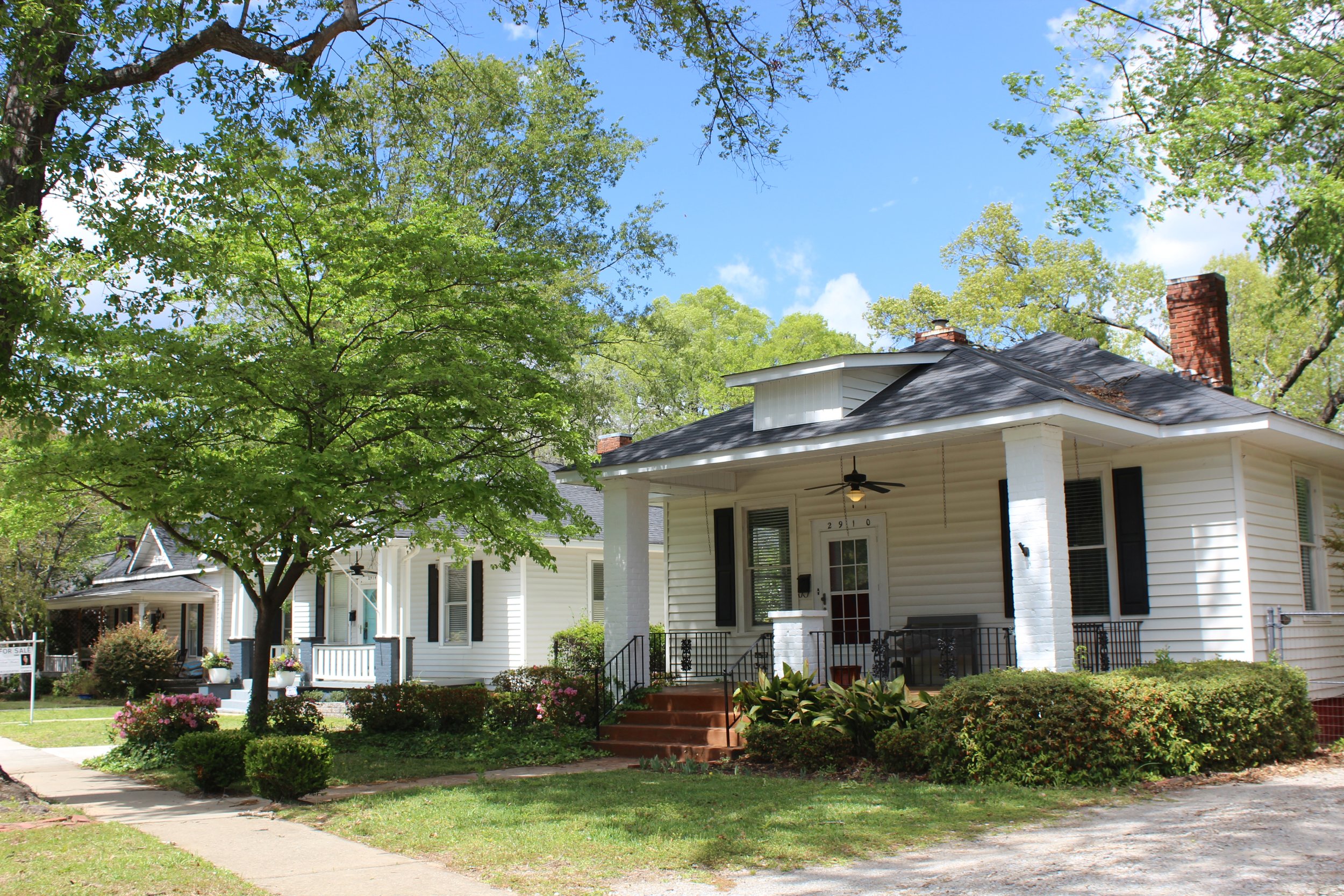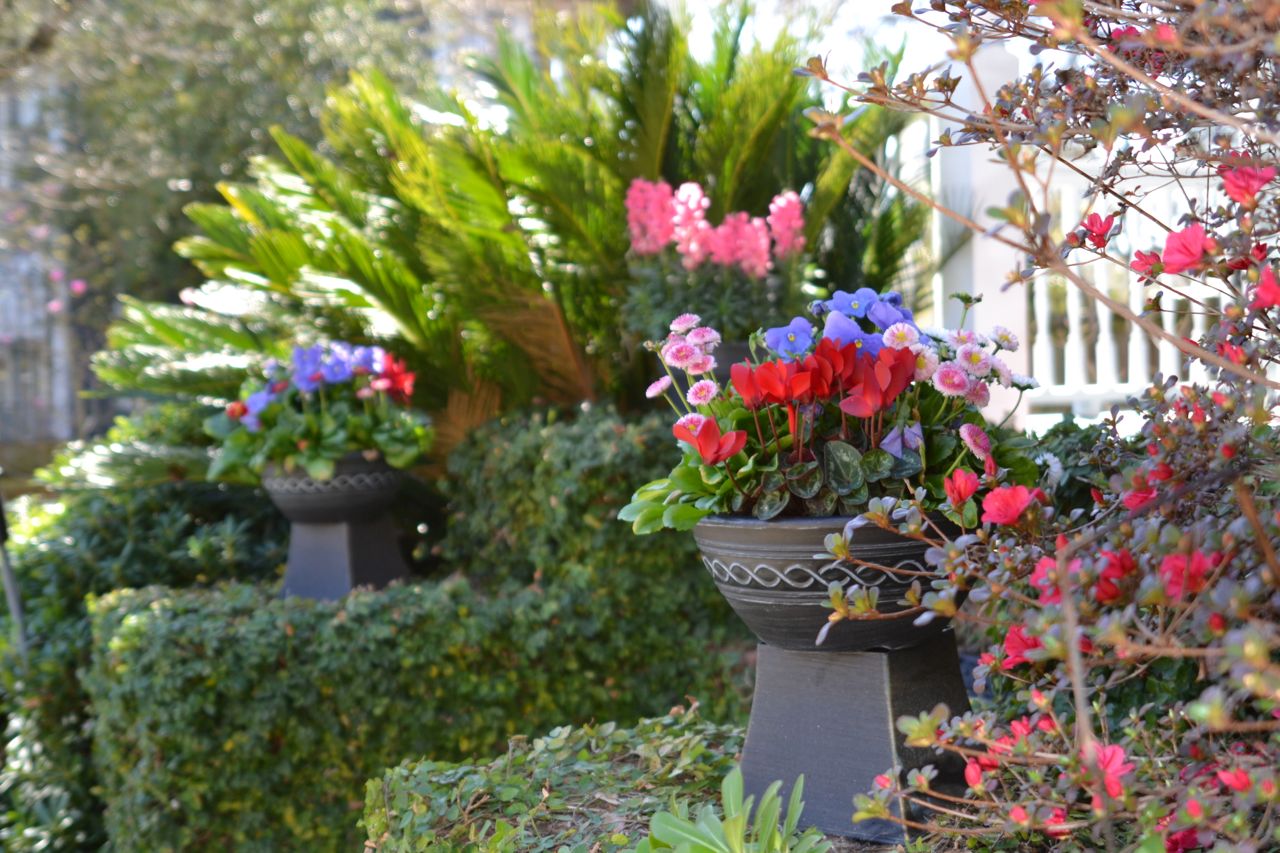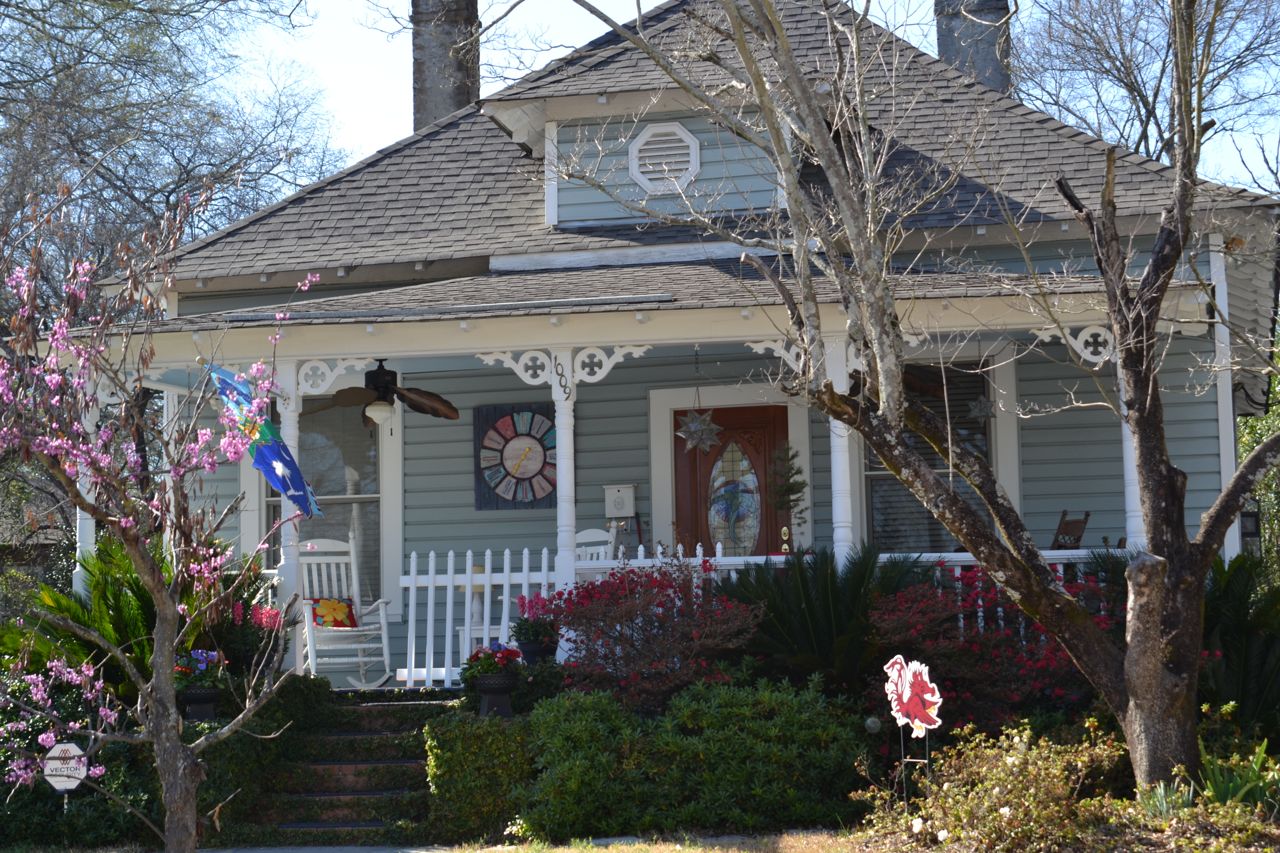Architectural Styles
Architectural styles of the past hundred and fifty years—farm houses, two-story Victorians, craftsman bungalows, brick Shandon-style, ranches and new homes—are found in the neighborhood. Primarily a farming area during the 1800’s, Earlewood has several traditional farm houses from this period.
Earlewood grew rapidly from 1900 to 1930. The popular Craftsman Bungalow style homes were built on recently platted lots and streets. Over the next fifty years many homes were built in the Shandon Style, a brick bungalow with gabled roofs, and the ranch style. In the 1990’s Earlewood saw a resurgence of new construction as new homes were built with the charm and character of older homes.
Historically Significant
The homes in Earlewood have considerable historical and architectural significance. The first log cabin in central South Carolina was built in what is now Earlewood. The cabin, an almost perfectly preserved specimen of a frontier type log cabin built of chinked logs and wood pegs, was moved from River Drive to Sesquicentennial State Park and is now restored and opened to the public.
Craftsman Bungalows
People fortunate enough to own an Arts & Crafts home, own a gem — a true American original — full of hand-crafted details that are rarely seen in modern housing. We hope that our first Bungalow Fest Tour of Homes will give you a new appreciation of Earlewood and the Craftsman Bungalow.
The bungalow design has its roots in the native architectural style of Bengal, India. During the late 19th century English officers in colonial India had small houses built in the “Bangla” style. They were designed for warm weather with low roof lines, windows grouped for sunlight and for ventilation, over- hanging eaves to hold off the heat, and big porches to sit on in the evening. The simplicity of the Bungalow is also a reaction to the fancy ornamentation and excesses of the Victorian style which was so popular in the 1800’s.
The Craftsman style is defined by its low-pitched gabled or hipped roofs, wide overhanging eaves with exposed roof rafters under them, large front porches supported by tapered square (battered) columns and a practical floor plan. Other features found in typical Craftsman Bungalow homes include open floor plans, corner fireplaces and double hung windows with multiple lights in the upper window and a single pane in the lower.
Because bungalows were targeted to America’s middle class, designers didn’t include spaces for maids and servants. The kitchen was usually small and functional, while the fireplace was considered the heart of the home. Light fixtures and hardware were also considered integral to the interior design.
The style proved incredibly popular and the bungalow style evolved into a simpler version for the broader market as building plan books and pre-cut home kits became available.
Earlewood has hundreds of Craftsman Bungalows. Many have been restored, but there are also numerous of these historic houses waiting on a new owner to give them some much needed TLC.
Aladdin Kit Homes
Aladdin was the first of seven major firms that offered “kit” houses, publishing its first catalog in 1906. Another well-known firm was Sears & Roebuck. At first Sears sold only house plans, but after the success of Aladdin, Sears began manufacturing kit homes too. The common bungalow was the most popular model of kit homes sold because “they were cheap to build, small and simple in design, and functional for first-time buyers…”
Aladdin offered options in design which permitted the customer to design their own home to their specifications. The Aladdin architects often adapted pre-existing designs to suit customers’ needs, thus providing a true ‘custom built’ pre-manufactured home.
The material in each kit house was pre-cut and numbered and delivered by train to the purchaser. The blueprints and construction drawings were easy and simple to follow. The manual gave direct instruction on how to erect an Aladdin home, and a check list covered all the materials shipped.
Included within each manual were instructions on building the foundation or basement of the house even though materials for the foundation were not included in the purchase. Aladdin boasted that their homes could be built in a day, but were usually constructed in a week to three weeks. Aladdin also bragged that most homes would be delivered within five to eight days of receiving the catalog order.
Aladdin’s homes became very popular and, between 1910 and 1940, they sold over 75,000 homes. In addition to house plans, the Aladdin catalog also included plans for garages, add-ons to the side or rear of the house, pine or oak flooring, columns, built-in cabinets, doors and hardware, bathroom fixtures and light fixtures.
One of the Aladdin models was named The Hudson and sold for $1,098.20 in 1917. The Hudson is a two-story Craftsman style home also known as the Four Square. The floor plan and exterior design of The Hudson is very similar to the home at 2926 Clark Street..





